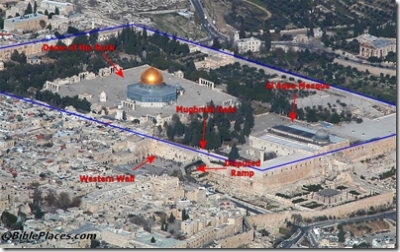Aren Maeir has posted a short report from his visit to Eilat Mazar’s excavation in the City of David.
Mazar just concluded a six-month season and has uncovered more of the monumental building that she believes may be identified with the palace of David. Maeir says:
The structure is in fact very impressive, and it appears, based on the finds from below this astounding structure, that it was built no later than the late Iron Age I, since no later finds were found in the fills below this structure. Also, in one area, Iron Age IIA pottery was found in a context of secondary construction and use of the building. What this clearly means is that in the verly late Iron Age I, or the very early Iron Age IIA (whether you date this to late 11th/early 10th, or late 10th), there were substantial public architectural activities in Jerusalem.
Read the whole post and the comments, especially the one by Zachi Zweig. This is the sort of stuff that newspapers should be covering, not the silly nonsense so often featured. Mazar’s findings may radically affect our understanding of Jerusalem in ancient times, and that’s without regard to whether she has found David’s palace or not.
Elsewhere, Ronny Reich told a group of us today about some 200 bullae, a beautiful carved pomegranate, and a huge quantity of fishbones that have been discovered in the City of David in the last couple of years. These are significant because they date to the 9th century B.C. and have Phoenician elements. Reich suggests that these may be related to influence from the northern kingdom via Queen Athaliah. An article is due out on this in Qadmoniot (Hebrew) in the near future, with an English translation to follow in another journal.

